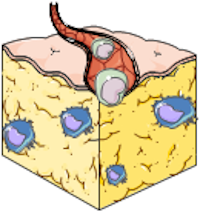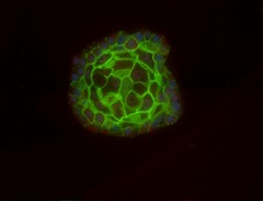Introduction
Obesity and obesity-related co-morbidities are on the rise globally, necessitating the development of novel treatments. White adipose tissue (WAT) is a key regulator of whole-body metabolism and energy balance, as well as a key role in the development of insulin resistance and type 2 diabetes.

This study describes a new technique to isolate and culture mature human adipocytes. White adipose tissue (WAT) dysregulation plays a central role in the development of insulin resistance and type 2 diabetes (T2D). To develop new treatments for T2D, more physiologically relevant in vitro adipocyte models are required.
How to culture vascularized & immunocompetent 3D models in a standard Multiwell
Abstract
The authors state that “Research on white adipose tissue (WAT), which constitutes one-fifth to one-half of the total body mass of a human’s body, has gained more and more interest and attention in the era of “diabesity”.
In vitro research on mature human WAT is hampered by many challenges and, hence, a majority of WAT-related research is conducted using animal models as well as clinical observations and genome-wide association studies (GWAS), both featuring limitations in terms of translatability and potential for experimental interventions, respectively.
Here, we describe methods to isolate primary mature human adipocytes from biopsies and to fabricate tailored organ-on-chip platforms for the long-term culture of WAT constructs.”
References
Rogal J, Roosz J, Loskill P. Isolation, Integration, and Culture of Human Mature Adipocytes Leveraging Organ-on-Chip Technology. Methods Mol Biol. 2022;2373:297-313. doi: 10.1007/978-1-0716-1693-2_18. PMID: 34520020.


